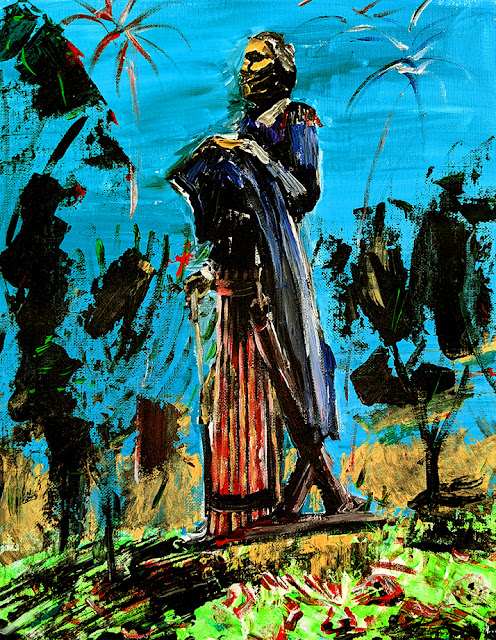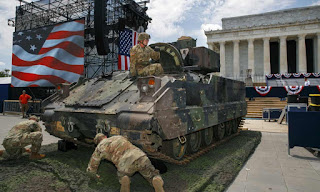I was inspired by recent 4th of July festivities to do some plein air painting at Valley Forge.
In the park, there is a prominent statue of General George Washington with his favorite prop, the fasces. George here is gazing out towards the house he stayed in during the encampment at Valley Forge. He brought his enslaved cook Hannah along, who was half Oneida Native American and half African. Most of his hundreds of other slaves stayed at his Virginia plantation during the war.
Prior to the Revolution, George single-handedly started the French and Indian/Seven Years War when he ambushed and killed a French patrol in French territory during peacetime. The Jumonville incident.
A surveyor and land speculator, George stood to gain handsomely if the British could push the French and Indians out. Later, to avoid taxes levied to pay for the war he started with said murderous ambush, and to ensure the continuation of legal slavery and Indian removal, he led the colonies in the war against Britain.
George's favorite prop for statues and portraits is the fasces. The fasces symbol dates back to classical Greece and Rome. "The word “fascism” itself, like its Italian progenitor fascismo, derives from the Latin for “bundle of sticks.” And while it may seem an odd and benign symbol, that bundle — or fasces as it was called (in the Greek, ῥάβδοι) — carried significant political and cultural weight, as well as the threat of violence. In the center of the bundle of rods a small axe was kept in case capital punishment had to be carried out." (source)
The recent 4th of July holiday with its fireworks and mid-summer festivities made me think of Midsummer, which once honored the Sun Goddess with bonfires and dancing. Replacing the traditional celebration of the Sun Goddess with militarism and nationalism. Thanks, George.








Comments
Post a Comment